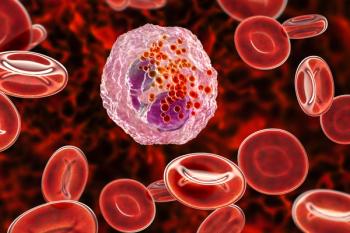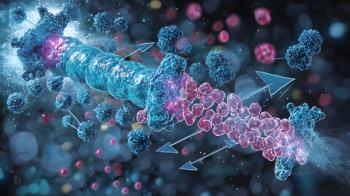
Psilocybin at the Crossroads: Regulatory Barriers and the Pharmacist’s Role in Palliative Innovation
Abigail Thomas, PharmD, and Lee A. Kral, PharmD, discuss the evolving role of psilocybin-assisted therapy in palliative care, highlighting current evidence, safety concerns, and how pharmacists can guide patient selection, manage drug interactions, and support education as the therapy moves closer to clinical use.
As the field of palliative care continues to explore innovative approaches to managing complex symptoms at the end of life, psilocybin-assisted therapy (PAT) is emerging as a promising, though controversial, option for addressing depression, anxiety, and existential distress in seriously ill patients. Despite growing public interest and a wave of early clinical research suggesting sustained benefits from even a single dose, psilocybin remains federally classified as a Schedule I substance, limiting its availability to tightly regulated research settings.
In this interview, Pharmacy Times spoke with Abigail Thomas, PharmD, a pharmacy resident at Dana-Farber Cancer Institute in Boston, Massachusetts, and Lee A. Kral, PharmD, a clinical pharmacy specialist in pain management at The University of Iowa Hospitals and Clinics Center for Pain Medicine in Iowa City, on the evolving landscape of PAT in the palliative care setting. Both Thomas and Kral will be participating in The Jeffrey Fudin Debates at the Society of Pain and Palliative Care Pharmacists’ eighth annual
Pharmacy Times: How common is the use of PAT in reducing depression, anxiety, or existential distress in the palliative setting?
Abigail Thomas, PharmD: The use of PAT in the palliative setting is currently low because these drugs are usually administered as part of a clinical trial. Currently, there are 18 total studies that are recruiting or have not started recruiting listed on the government’s website regarding PAT. There are a handful of states that have decriminalized its use, and a couple have legalized its supervised use, but since it is still illegal under federal law, it is unknown how widespread its use is.
Pharmacy Times: When is PAT most beneficial for patients in the palliative setting, and how can pharmacists support this determination?
Thomas: PATis most beneficial for patients who have not found relief from their suffering with other agents. Pharmacists can help support this determination by being the medication experts and knowing when all other options have been exhausted.
Pharmacy Times: How durable are the therapeutic effects of a single or limited number of psilocybin-assisted sessions in the palliative setting?
Lee A. Kral, PharmD: There is a strong relationship among plasma concentrations, 5-HT2A receptor occupancy, and psychedelic effects. Pharmacodynamic effects are present as long as the compound is present in the body (usually a few hours). However, there is speculation that with neural network remodeling that the effects may last weeks longer. There have also been some reports of persistent psychosis and late onset flashbacks.
Pharmacy Times: What are the known safety concerns or AEs associated with psilocybin use in the palliative setting?
Kral: Most of the safety concerns that have been raised are psychological, rather than physiological, though some central nervous system effects (eg, drowsiness, tremors, dizziness) and cardiovascular effects have been noted (eg, increased pulse, blood pressure). The psychological effects include prolonged mania, scary hallucinations and hallucinogen persisting perception disorder (ie, flashbacks), extreme panic, paranoia, and nausea. Mental illness may be magnified rather than improved, with reports of suicide, prolonged psychotic reactions, and bipolar affective disorder.
Pharmacy Times: Are there specific contraindications or precautions pharmacists should consider before recommending psilocybin in a palliative setting (eg, psychiatric history, drug interactions)?
Kral: Though psychedelics have been used in patients with mood disorders, individuals must be educated and monitored closely for amplification of mental illness. Psilocybin is a pro-drug but its metabolite, psilocin, is a partial agonist at the 5HT2a receptor and is metabolized partially via monoamine oxidase. Pharmacists should be aware of any monoamine oxidase (MAO) inhibitors or other agents that may enhance or diminish the clinical effects of psilocin.
Pharmacy Times: Is there any known interaction between psilocybin and commonly used hospice medications such as opioids, benzodiazepines, or selective serotonin reuptake inhibitors (SSRIs)?
Kral: There aren’t any specifically stated drug interactions outside of MAO inhibitors, but psilocybin does have activity at both serotonin and to a lesser extent dopamine receptors, so the potential is possible to get additive serotonin effects with SSRI’s, serotonin-norepinephrine reuptake inhibitors, and opioids. Ketamine is also often used for pain management in palliative care, and this would have additive effects.
Pharmacy Times: How does typical dosing and administration of psilocybin translate to palliative care, and where might challenges arise in this translation?
Thomas:Typical dosing of psilocybin utilizes a 3-step process: preparation, dosing, and integration. Palliative care translates to this care by utilizing talk therapy and incorporating patients’ values back to their experiences. Commonly, there is a rapport between therapist and patient during the dosing and integration period, something that is needed in palliative care. Most studies utilize psilocybin 25 mg x 1 dose, no matter the indication. There are also studies examining the difference of effects between low (0.14 mg/kg) and high doses (0.3 mg/kg) of psilocybin. Low doses of psilocybin are not expected to cause hallucinations. There are data that high doses are more efficacious with longer lasting effects than high doses. Recreational doses of psilocybin are not typically defined; however, the goal of these doses is to cause hallucinations, meaning that they may be the same dose as what studies define as high-dose psilocybin.
Pharmacy Times: What is the role of the pharmacist in PAT in the palliative setting?
Thomas:The pharmacist’s role in PAT in the palliative setting would be to assess potential drug interactions and contraindications. In addition, the pharmacist can also educate the patient on expected onset and duration of effects.
Newsletter
Stay informed on drug updates, treatment guidelines, and pharmacy practice trends—subscribe to Pharmacy Times for weekly clinical insights.







































































































































































































